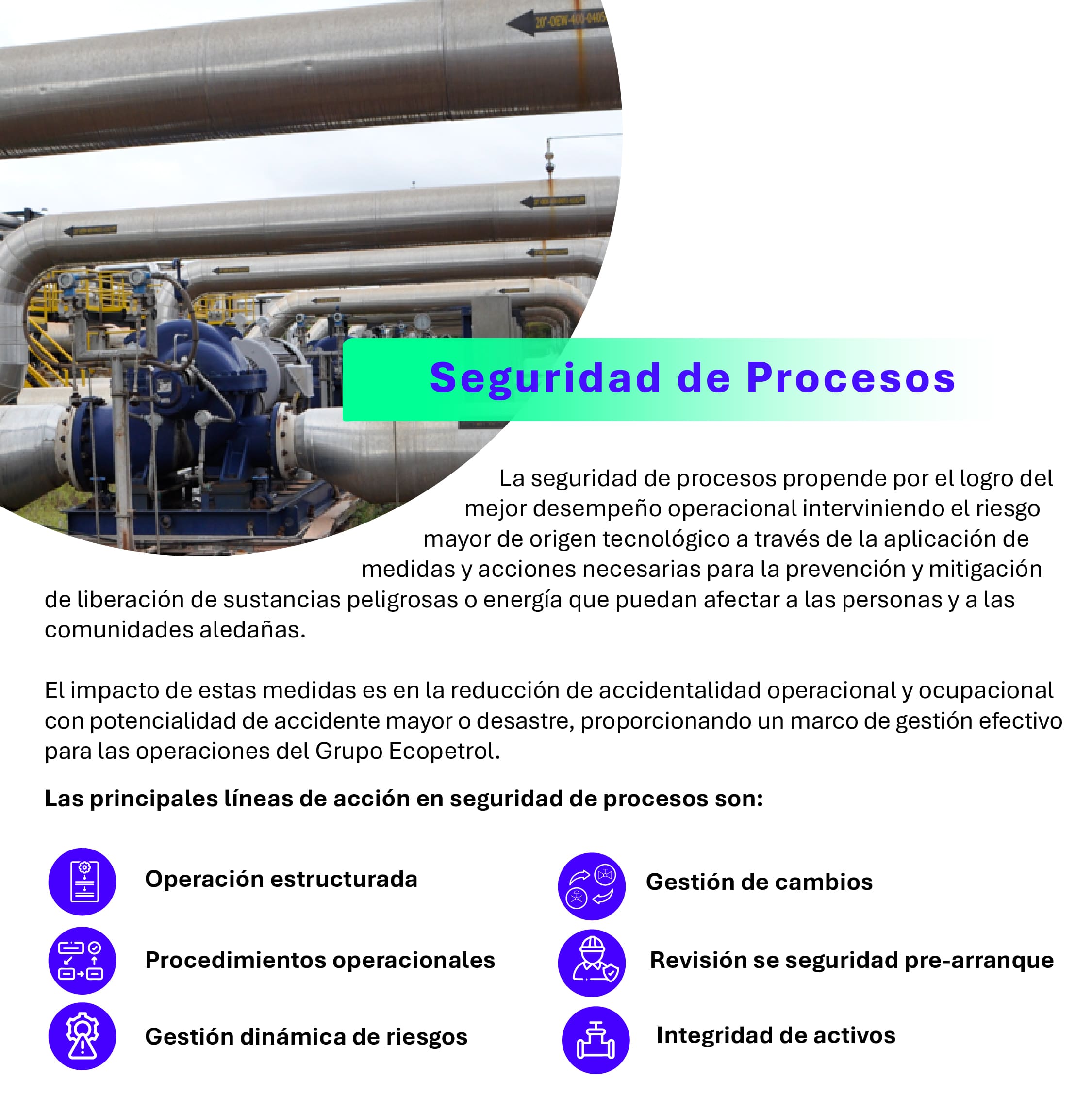 PautaInternas
PautaInternas
 buscador
buscador
 Management for the prevention and attention of risks
Management for the prevention and attention of risks
Management for the prevention and attention of risks
Apr 13, 2021
Occupational health risk and safety management is part of the responsibilities of the management, and an integral part of all the processes of the organization, for decision-making. Occupational health risk and safety management is dynamic, repetitive and receptive to change according to the operational context of the organization.
Risk management at Ecopetrol performs a hierarchical deployment of elements and procedures in order to ensure the effectiveness of the prevention and mitigation barriers established, to compensate for operational deviations and potential failures of the systems components; maintain the reliability of the measurements in the event of unwanted events; and protect people, the environment, infrastructure and the Company’s image.
All hazards of a facility, process or activity are identified and listed, and their sources and consequences for their eventual release are established. Subsequently, the risk of the dangerous event materializing is assessed, using the RAM risk assessment matrix. The result of said exercise allows to identify and rank the scenarios of interest, which are monitored in Ecopetrol’s risk management.
Senior management is accountable for risk management, whilst those responsible for supervision are responsible for: ensuring knowledge of hazards, threats and risks; recognizing and understanding the risks that can divert the organization from meeting its objectives; ensuring that management systems are effectively implemented and operated; ensuring that the risk remains within the range and value defined by the organization as tolerable or fully acceptable; ensuring that information and communication are processed appropriately.
As for personal safety, hazards are present in all our activities. Thus the different types of hazards must be identified first and foremost (Electrical, locative, chemical, physical, inter alia) and the source of the hazards – which may be people, activities, work environment, tools and equipment, and/or materials.
The risks are addressed once the dangers and risks become known. This may include activities to avoid, accept, reduce or transfer the risk. Then the risk is assessed, and finally the controls or barriers are established. The types of controls are shown below

|
5. Types of Controls HSE: A COMMITMENT TO LIFE |
||
|
More effective |
ELIMINATION |
Physically eliminating the hazard |
|
|
SUBSTITUTION |
Replace the hazard for a less risky one |
|
|
ENGINEERING |
Isolate people from the danger |
|
|
MANAGEMENT |
Change the manner in which people work |
|
Less effective |
PPEs |
Protecting workers with PPEs. It is the last line of defense and the least effective one. |
Source: Ecopetrol S.A. - Vice Presidency of HSE
To prevent risks, it is necessary to: Observe and reflect on the dangers associated with the activity of the risks derived therefrom; verify that the risk is controlled at all times; identify good practices and safe habits, aspects to improve and unsafe acts; discuss, highlight and congratulate on good practices, communicate deviations and agree to close them.
- - - - - - - - - - - - - - - - - - - - - - - - - - - - - - - - - - - - - - - - - - - - - - - - - - - - - - - - - - - - - - - - - - - - - - - - - - - - - - - - - - - - - - - - - - - - - - - - - - - - - - - - - - - - - - - - - - - - - - - - - - - - - - - - - - - - - - - - -